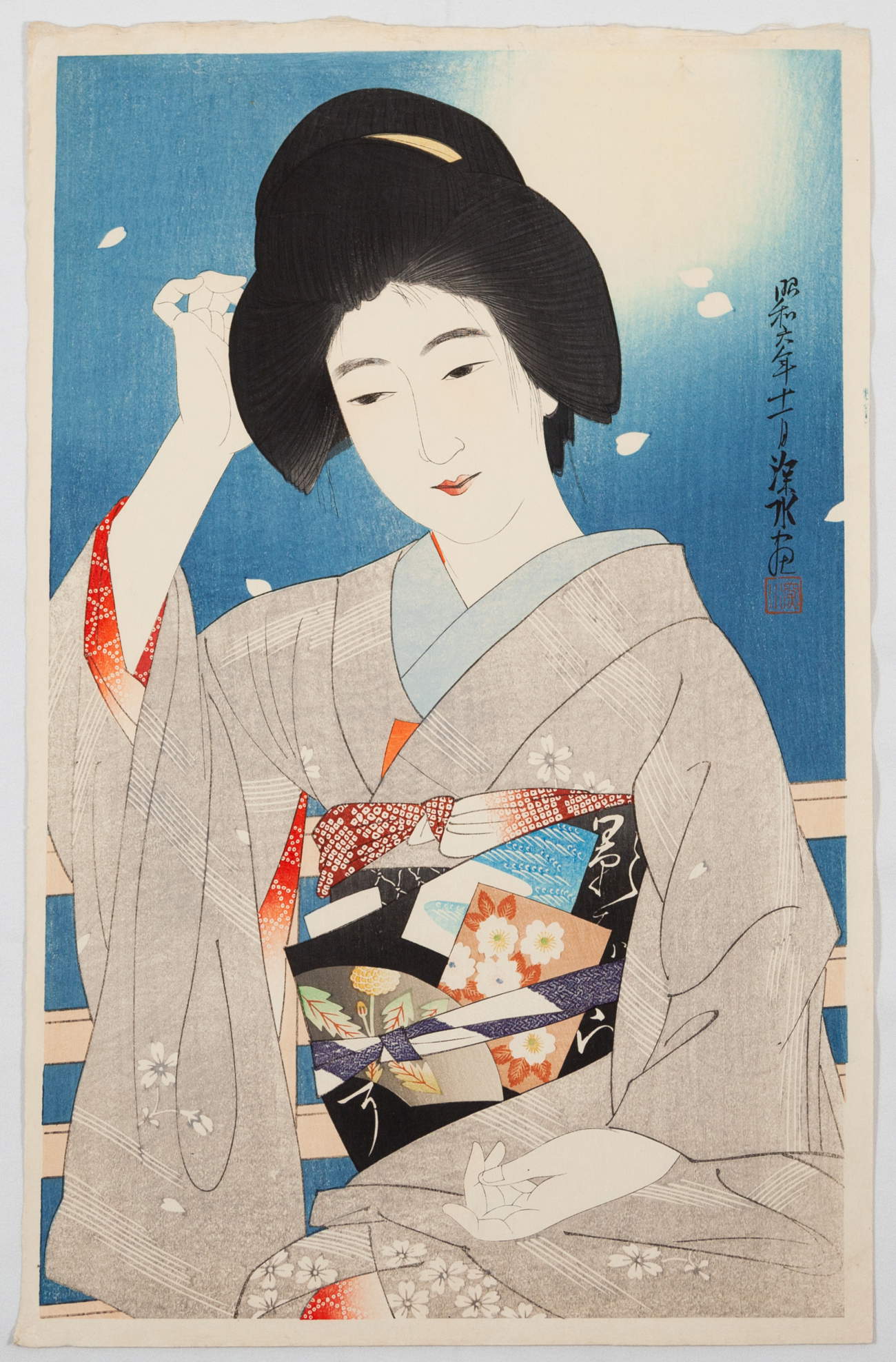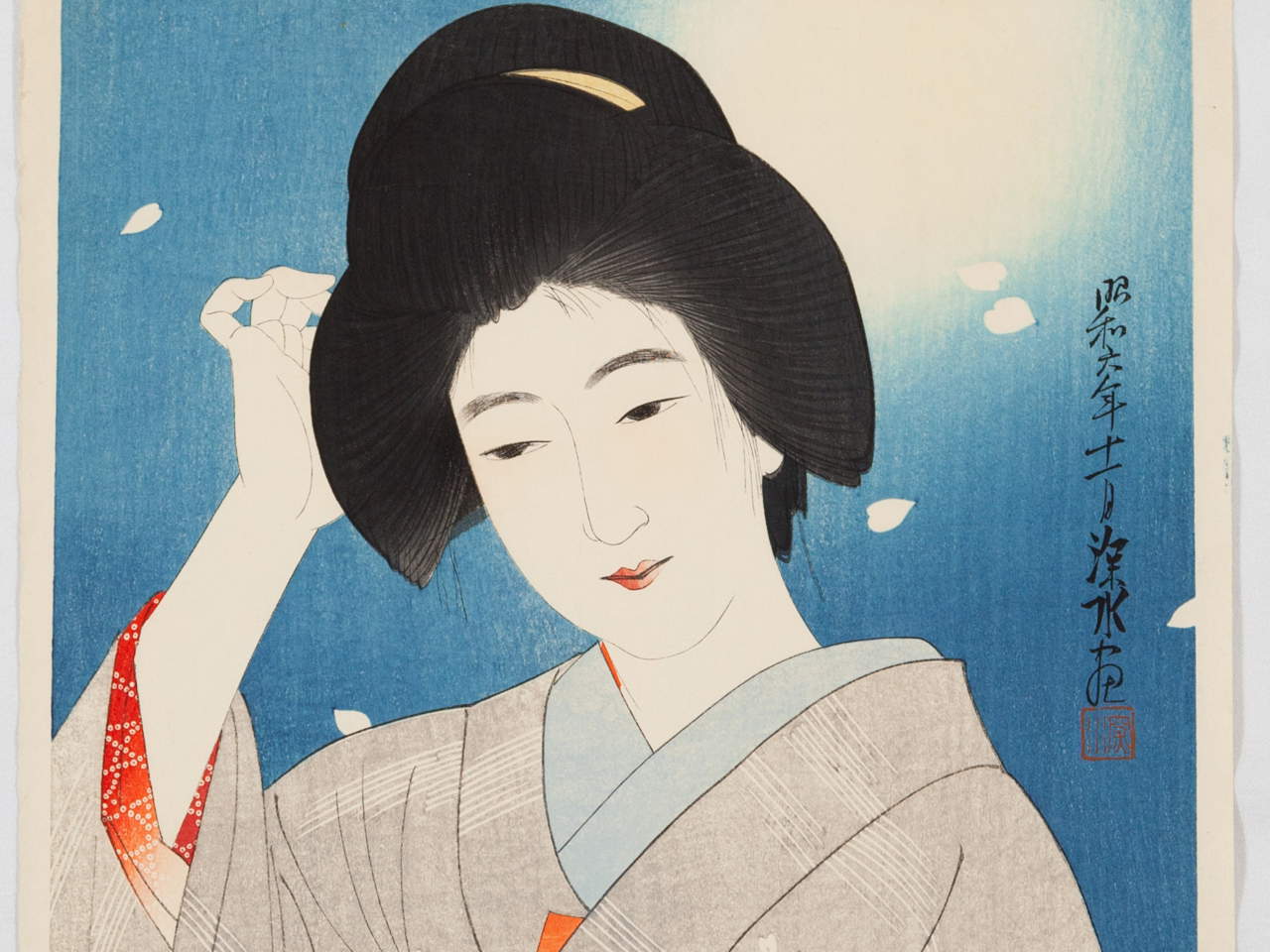In Turin, Italy's first exhibition dedicated to shinhanga, Japan's new woodcuts
From March 8 to June 30, 2024, Palazzo Barolo in Turin is hosting the exhibition Shinhanga. The New Wave of Japanese Prints, curated by Paola Scrolavezza, an expert in Japanese Culture and Literature and lecturer at the Department of Modern Languages, Literatures and Cultures at the University of Bologna, with the artistic advice of Marco Fagioli, collector, historical authority on Japanese art and author of numerous publications; it is promoted by Vertigo Syndrome under the patronage of the City of Turin and the Consulate General of Japan in Milan. This is the first exhibition in Italy on the art of shinhanga. Literally “the new woodcut,” shinhanga is a movement officially born in 1916 thanks to the work of artists such as ItÅ Shinsui and Kawase Hasui who, moving away from the subjects ofukiyoe, began to depict characteristic views of the rural province or city suburbs, not yet reached by modernization, such as ruins, ancient temples, rural images, and night scenes illuminated by the full moon and the lights of street lamps. These views were soon joined by new types of bijinga, or women’s portraits, dedicated to women in modern times, portrayed in their everyday lives, while styling their hair or applying makeup.
More than eighty original works from private collections and London’s Japanese Gallery Kensington will come to the exhibition, as well as kimonos, historical photographs, and decorative objects, thus aiming to show how the shinhanga movement was able to maintain traditional wood engraving techniques while introducing innovative perspectives and overseas influences.
The exhibition proceeds through the combination of landscapes and bijinga and finds its central focus in the great KantÅ earthquake of September 1, 1923, the worst in Japanese history. Followed by violent fires that burned for a full two days, fueled by typhoon winds, this earthquake caused more than 100,000 deaths and completely razed a vast area around the capital: from the ashes a new Tokyo was born, ever more forward-looking, and with it a society that was avant-garde and open to the Western way of life. After this event, the production of shinhanga engravings intensified. Characteristic views were joined by metropolitan corners with deserted streets, houses from whose windows dense, artificial lighting filtered in. The absence of human figures prevailed in these works, and rain and snow symbolized humanity’s struggle against the natural elements. The woodcuts produced after the earthquake thus tell of man’s sense of bewilderment and loneliness in the face of the fragility of existence. Similarly, in the bijinga the connection with the world of nighttime entertainment typical ofukiyoe fades further, until it disappears altogether. The girls immortalized in the illustrations are not only ordinary women, but they also begin to move outside the home, in the streets or clubs of fashionable neighborhoods: they are maids, teachers, nurses and typists, independent and educated, emancipated young people, ready to seize the many opportunities that the new Japan offers them.
The shinhanga thus established itself from the second decade of the twentieth century and continued until the 1940s. It is an artistic reflection of an extraordinary period in contemporary Japan, which in the wake of the renewal already initiated in the Meiji era is characterized by an atmosphere of extreme freedom and cultural ferment. Against the backdrop of urbanization, the major cities became the centers of an art and culture increasingly within the reach of all, open to the new middle class and the new public coming to the metropolises from the provinces, attracted by the prospect of economic and social ascendancy and the nonconformist and modern lifestyle. It was in this context that a number of enlightened publishers and printers, most notably Watanabe ShÅzaburÅ, gave impetus to the development of the movement, intent on making an indigenous and innovative art while serving of the traditional process of hanmoto, or atelier, in which the artist takes care of the conception and design, entrusting the engraver, printer, and publisher with the later stages of print production and dissemination.
Through snapshots, videos and period magazines, and women’s clothing reminiscent of Japanese tradition but in which the modernizing influence from overseas can already be glimpsed, the Turin exhibition aims to recreate the atmosphere of the turn of the century and introduce the public to an artistic current still unknown in Italy. From prints dominated by the darkest tones of blue, where the only light is represented by the moon, to marinas bathed by the setting sun or the light of boat lanterns, to pagodas towering over cherry trees in full bloom, an ideal, emotional and symbolic landscape is born.
Accompanying the exhibition is a catalog published by Skira Editore and edited by Paola Scrolavezza.
In addition, a rich calendar of side events will be offered to visitors throughout the period of the exhibition, including workshops, lectures, book presentations and many other meetings dedicated to the theme.
Information and presale at www.shinhanga.it
Hours: Tuesday through Friday from 10 a.m. to 7 p.m.; Saturday and Sunday from 10 a.m. to 8 p.m.

 |
| In Turin, Italy's first exhibition dedicated to shinhanga, Japan's new woodcuts |
Warning: the translation into English of the original Italian article was created using automatic tools. We undertake to review all articles, but we do not guarantee the total absence of inaccuracies in the translation due to the program. You can find the original by clicking on the ITA button. If you find any mistake,please contact us.



























